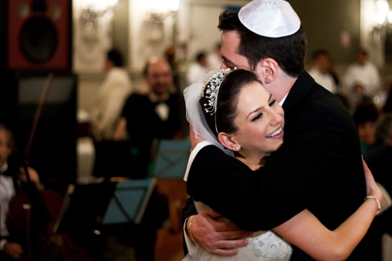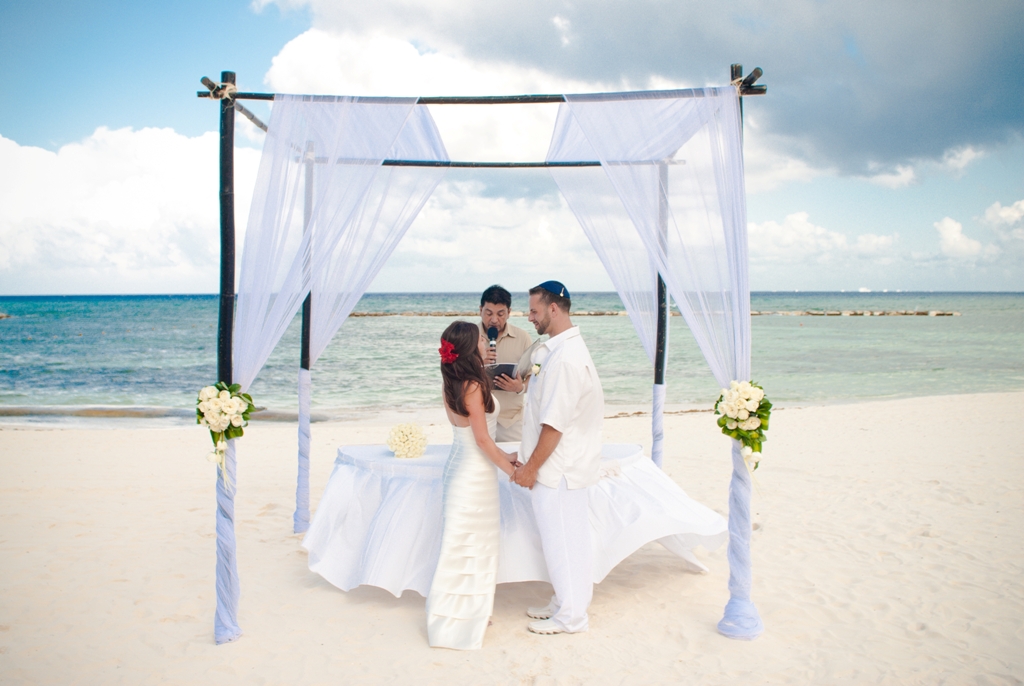A Jewish Wedding: Before and After
By Rebeca González
translated by: Nyima Bieber
In Judaism, getting married is more than a symbolic act.

The ceremony is divided into 2 parts: the “Kiddushin” (consecration by a rabbi, scholar and teacher of Jewish tradition) and the “nissuin” (the marriage itself). The wedding is held under the “Huppah”, a type of tent with 4 columns decorated with flowers. Each column is carried by a person, and the tent is symbolic of the home of the future spouses.
Prior to the event, the marriage terms are stipulated in a contract called “Ketubah“. Signed by the groom, it specifies the commitments and obligations of the couple. Upon completion he breaks a plate, which represents the commitment (i.e., once broken, it cannot be repaired).
The couple cannot see each other for a week before the wedding. This is done in order to increase the anticipation and excitement between them. To begin the formal ceremony, each separately greets their guests in what is called “Kabbalat Panim.”

The day of the union is called “Yom Kippur” (Day of Atonement), which is the happiest and holiest of all; the past errors of the couple are forgiven so that their souls may merge into one single completely new entity. There is the reconciliation with God and neighbor; it is said that if such reconciliation occurs successfully, the coming year will be filled with blessings and the spiritual level will rise to the height of becoming “heavenly angels“.
It is customary to wear white clothing to simulate the angelic effect in their appearance. The groom, usually called “chatan” must cover his head with a “kippah”; its use is mandatory in religious rituals. Both the “chatan” and the “kallah” (bride) also fast until the wedding ceremony concludes.
At the end of the ceremony, the couple is escorted to a private room to celebrate what is known as the “yihud” (meeting). The bride and groom are left alone for 10 to 20 minutes so that they may begin to experience their new life together, as well as break the fast before being congratulated by their guests.
Next comes the festive meal, known as “s’euda” with dancing, music, juggling and acrobatics. After eating, the “Birkat Hamazon” or blessing of the food is recited.
For the entire week after the wedding, friends and family to prepare meals in honor of the “chatan” and the “kallah”. In more orthodox sects of the religion, the couple must have been born into the Jewish religion, but some modern congregations accept marriage with people who are not part of the religion.


